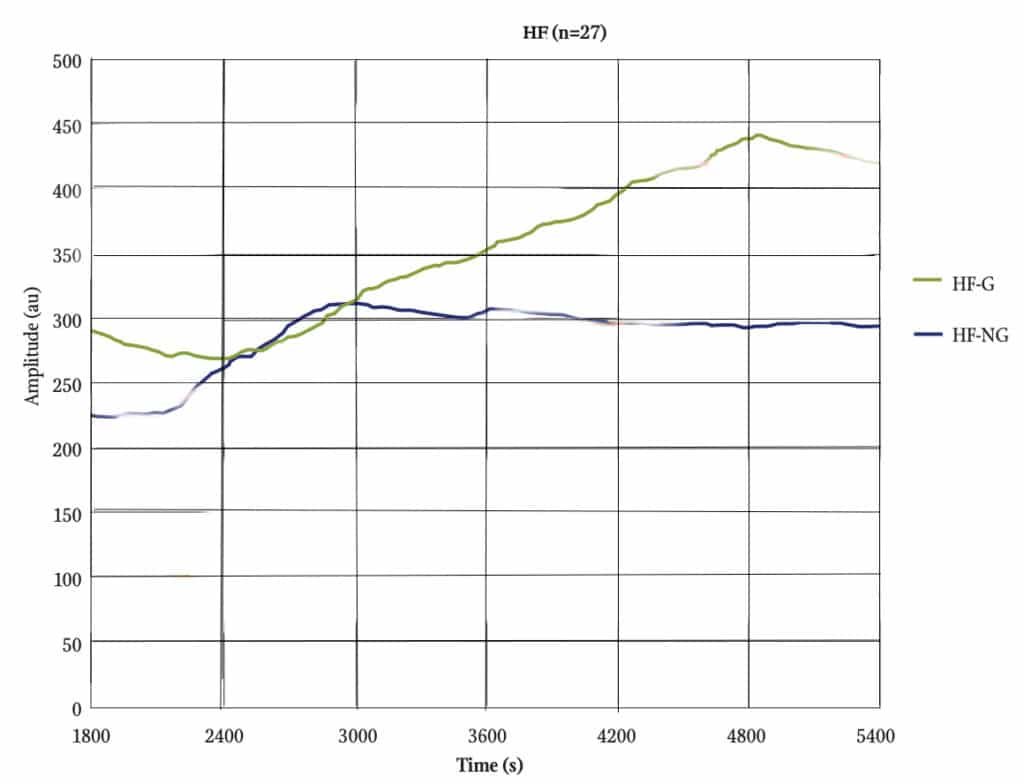Earthing for Vagal Tone

Our nervous system is run by electrical impulses, signals that travel through the body and brain, creating movement, thought and influencing our mood.
One of the longest nerve highways for these impulses is the vagus nerve, which runs from the brain to the abdomen. As the main nerve of our parasympathetic nervous system, the vagus nerve helps regulate a number of the body’s functions from our resting heart rate to breathing, and healthy digestion.
Research shows that improving vagal tone (or the functioning of vagus nerve) may support healthy cardiovascular function, relieve depression, reduce posttraumatic stress disorder, and ease inflammatory bowel disease.
When we positively influence the vagus nerve, we trigger a natural relaxation response that lowers anxiety, creates a feeling of happiness, and, supports our innate immunity to combat pathogens and tissue damage by controlling inflammation.
Grounding or earthing is one natural technique that can restore vagal tone, with benefits for our mind and body. Find out more below.
Why is everyone talking about the vagus nerve right now?
There are two reasons.
Firstly, stimulating your vagus nerve is a simple, effective means of stress management. Imagine receiving a big hug from a friend, doing a massive stretch to reach for the stars, or even taking a good, deep breath. The soothing effect of these activities is brought about by the vagus nerve. Activities that stimulate the vagus nerve can stop unconscious stress responses like shallow breathing, muscle tension and anxiety.
Secondly, through the vagus nerve we can stall progress of disease and improve our health and wellness.
Advances in the understanding of the nervous system have found that the vagus nerve helps inhibit or suppress certain proinflammatory markers, especially tumour necrosis factor (TNF ) and cytokines.
The vagus nerve passes signals from the brain to the spleen where it tells immune cells to reduce the production of the inflammatory substance in the bloodstream.
A well-functioning vagus nerve can bolster our innate immunity and combat disease.
This new knowledge has led medical researchers to explore therapeutic approaches that stimulate the vagus nerve in relation to inflammatory diseases including rheumatoid arthritis and other autoimmune conditions.
What does the vagus nerve do?
The Vagus Nerve establishes a two-way communication channel between the brain and major body organs and systems such as the pharynx, larynx, trachea, heart, aorta, lungs, and the entire gastrointestinal tract including the oesophagus, stomach, liver, pancreas, and spleen.
The vagus nerve has what could be termed a bunch of scouts that are constantly scanning the body, and be present in many different parts of the body.
These “scouts” look for bodily responses associated with stress, including hormones like cortisol and adrenaline.
When the vagus nerve has all the information it needs, it will give the signal to release certain enzymes and proteins (such as oxytocin) or the neurotransmitter acetylcholine to restore calm.
For example, acetylcholine in your lungs may aid breathing, while, in the heart, it can return your pulse rate to its resting rate. Oxytocin promotes feelings of social connectedness and positive emotions.
These are some of the ways the vagus nerve can restore calm and wellbeing to your mind and body.
How is Vagal Tone measured?
It’s important to understand that the vagus nerve is part of a branch of the nervous system that is not under conscious control. Its processes are “automated” and, as a result, measuring vagal tone is really an assessment of its influence on other organs and systems.
There are non-invasive and invasive techniques to measure vagal tone.
Invasive techniques usually involve manual stimulation of the vagus nerve using electrical frequencies.
Noninvasive tests measure biological processes such as your pulse rate, your breathing rate, and your heart rate variability (HRV).
What is Good Vagal Tone?
“Good vagal tone” is the ability to respond to stress, and quickly return to normal once the stress has gone. Resilience is an indicator that someone is strong and healthy. Good vagal tone can be measured via a low pulse rate, low breath rate, and a high HRV.
A positive feedback loop exists between high vagal tone, positive emotions, and good physical health. In other words, the more you increase your vagal tone, the more your physical and mental health will improve, and vice versa. Increasing your vagal tone activates the parasympathetic nervous system, and having higher vagal tone means that your body can relax faster after stress, a healthier, happier you all around.
How to Restore Vagal Tone?
There are many ways we can naturally influence vagal tone from grounding or earthing, to deep breathing to laughing or meditation.
Deep and slow breathing has been shown to reduce anxiety and increase the parasympathetic system by activating the vagus nerve. Taking about 6 breaths over the course of a minute is a great way to relieve stress. This is key to stimulating the vagus nerve and reaching a state of relaxation.
Research shows that meditation increases vagal tone and positive emotions, and promotes feelings of goodwill towards yourself and others. This study shows that meditation reduces the “fight or flight” activity and increases vagal modulation.
We are “social animals”, connection and interaction with others is an important part of life for us humans, socialising and laughing can reduce your body’s stress hormones. In particular, laughter has been found to stimulate the vagus nerve. Having fun and meaningful interaction with others will help build your resilience to stress.
Grounding and Vagal Tone
Earthing or grounding is the act of absorbing the earth’s free electrons, the smallest unit of negative electrical charge, into your body. This can be done by using a conductive indoor earthing product or by walking barefoot on the ground.
Being in direct contact with the earth’s negative electrical potential, grounds the body. It creates documented physiological and electrophysiological changes that promote health.
When we are relaxed and calm, our body is in a position to be able to repair, digest and assimilate nutrients in our food properly and also initiate repair for the ongoing regeneration.
True healing can only happen when we are in this state of relaxation, this is perhaps one of the keys as to why earthing has such a wide range of benefits, particularly for those who are able to benefit from grounding while they sleep.
We look at several studies below that measure the impact of grounding on HRV, resilience to stress, and inflammation.
Earthing and HRV
In 2011, Sinatra and Chevalier measured the HRV of 28 healthy subjects over two, two-hour sessions where participants rested in a reclining chair with grounding patches connected to the earth on their feet and palms. Baseline measurements were taken. The time spent grounded was limited to 40minutes within one of the two-hour sessions, so before and after measurements could be clearly seen. Subjects acted as their own control and were not told when they would be sham grounded or truly grounded.

The above picture shows a clear increase in HF with grounding (green line) over the entire 40minutes, whereas the non-grounded group (blue) had an initial increased due to relaxation, and then stayed steady..
Parasympathetic nervous system activity influences the high-frequency component of HRV. Parasympathetic nervous system function increased by twice in the grounded group compared to the ungrounded group at the end of 40-minutes of grounding. This clearly shows that grounding helps activate the parasympathetic nervous system, and HRV.
A 2017 study looked at vagal tone in premature babies in humidicribs in neonatal intensive care. Vagal tone was measured via the high-frequency component of HRV of 20 infants before, during, and after grounding. Vagal tone increased by 67% with grounding as compared to pre-grounding levels. The researchers concluded that grounding improves vagal tone and “may improve resilience to stress and lower the risk of neonatal morbidity in preterm infants”.
These findings take on broader meaning when you know that negative emotions such as panic, depression, anxiety, and anger are associated with low HRV.
Earthing and Mood
The idea that our mood can be influenced by our surroundings is nothing new, relaxing at the park or on the beach is easier than trying to do the same in a traffic jam at rush hour.
How about the idea that if we are connected to the earth we will be happier? This is something else altogether.
A pilot study published in 2015 in the Psychological Reports: Mental & Physical Health found that grounding for one hour had a positive effect on mood. Forty participants relaxed in a chair with a grounding pillow and patches. Half the group were grounded, and half were sham grounded. Researchers found that:
“the grounded group had a more pleasant experience, felt more positive, less negative, and more relaxed than the control group.”
Chevalier, The effect of grounding the human body on mood
Together these studies show that grounding helps activate the parasympathetic nervous system, improves vagal tone, and creates a positive mood.
Grounding and Inflammation
Inflammation is a contributing factor in most, if not all, modern disease. While advancements in knowledge about our nervous system suggested new ways to combat inflammation, old and simple ways like earthing are also deserving of further research.
Earthing or being in conductive contact with the earth is a simple way to reduce inflammation that may have far-reaching effects on health.
Faster resolution of inflammation was observed with the grounded group compared to the non grounded group in a 2010 double-blind pilot study that examined the impact of grounding on delayed onset muscle soreness. The study measured 28 blood markers and found significantly fewer circulating neutrophils and lymphocytes in the grounded group compared to the ungrounded. Researchers theorised that mobile electrons from the earth acted like antioxidants in the grounded subjects, helping to resolve inflammation faster.
How to Get Started
Getting your shoes and socks off, and feeling the grass beneath your feet is a simple way to start your earthing experience. The earth is accessible to most of us, most of the time in one way or another. You can walk in a local park, stand or lie on the grass in your backyard, or dig your toes into the sand at the beach. All of these offer an effective way to start your earthing and feed the powerful free electrons into your body.
A convenient way to earth regularly, for several hours each day, is by using an indoor earthing product. Take a look at the different options in our website shop. Regular earthing for as little as 40minutes a day could enhance your vagal tone, lift your mood, improve your resilience to stress, and help resolve inflammation in your body.





